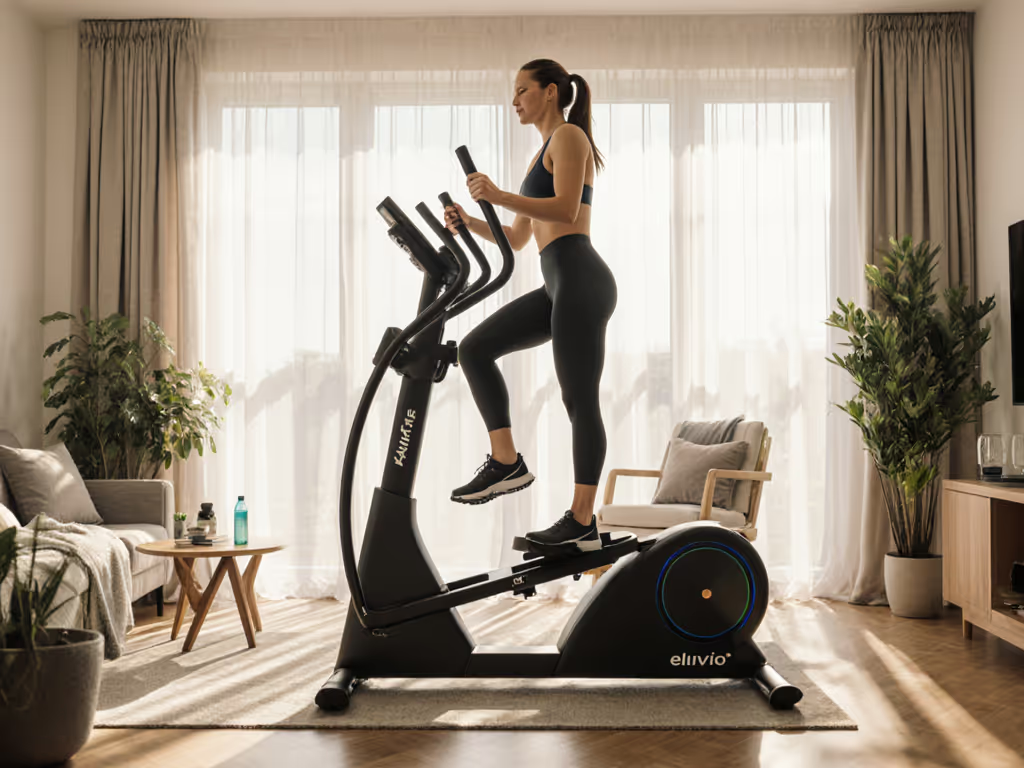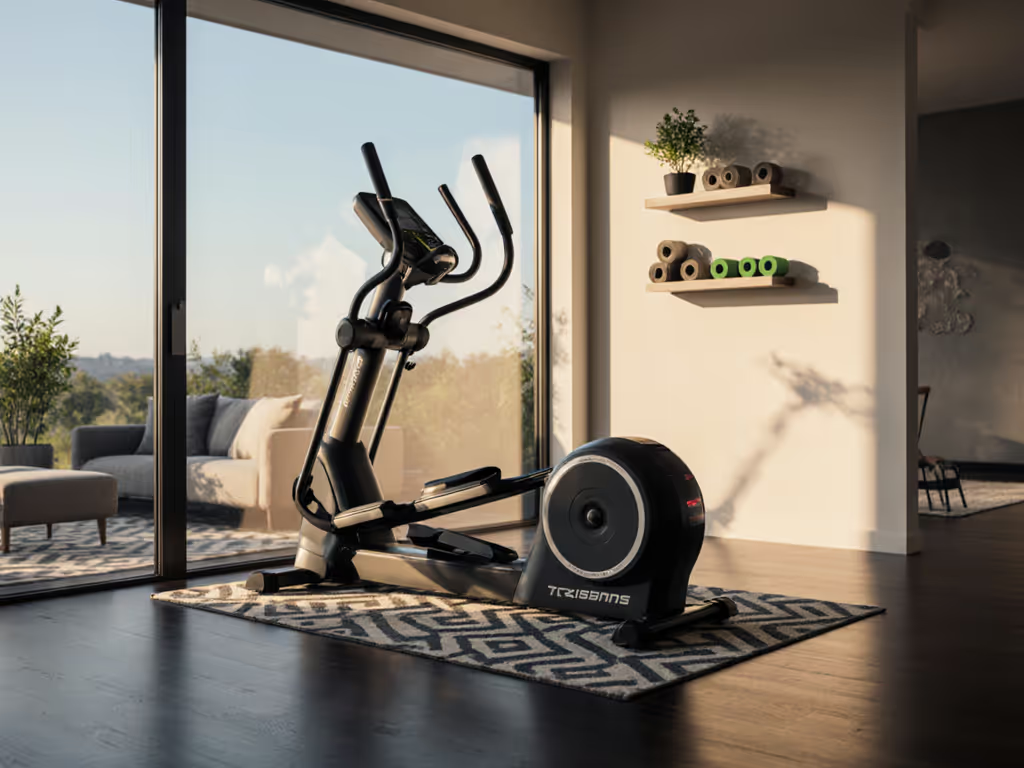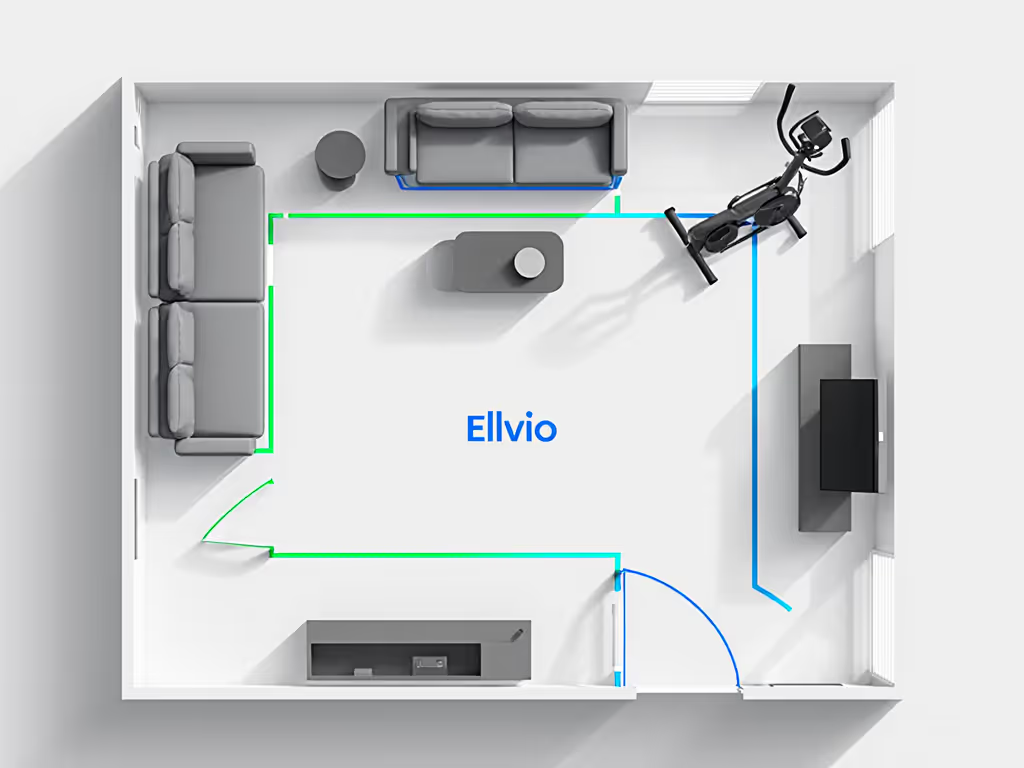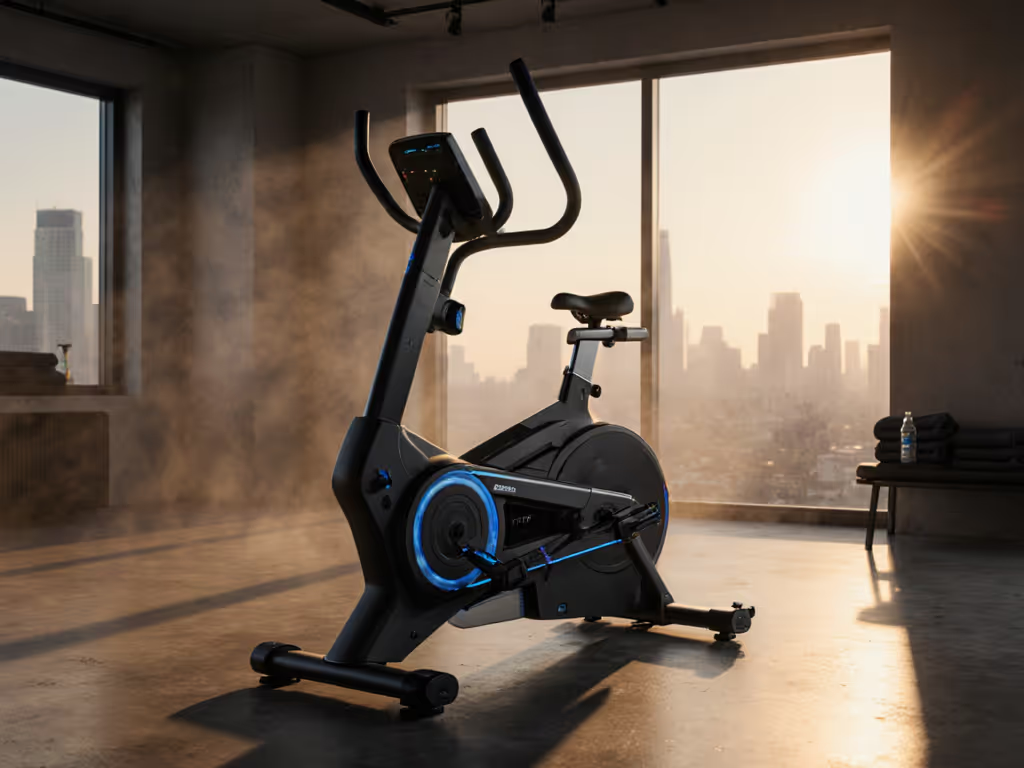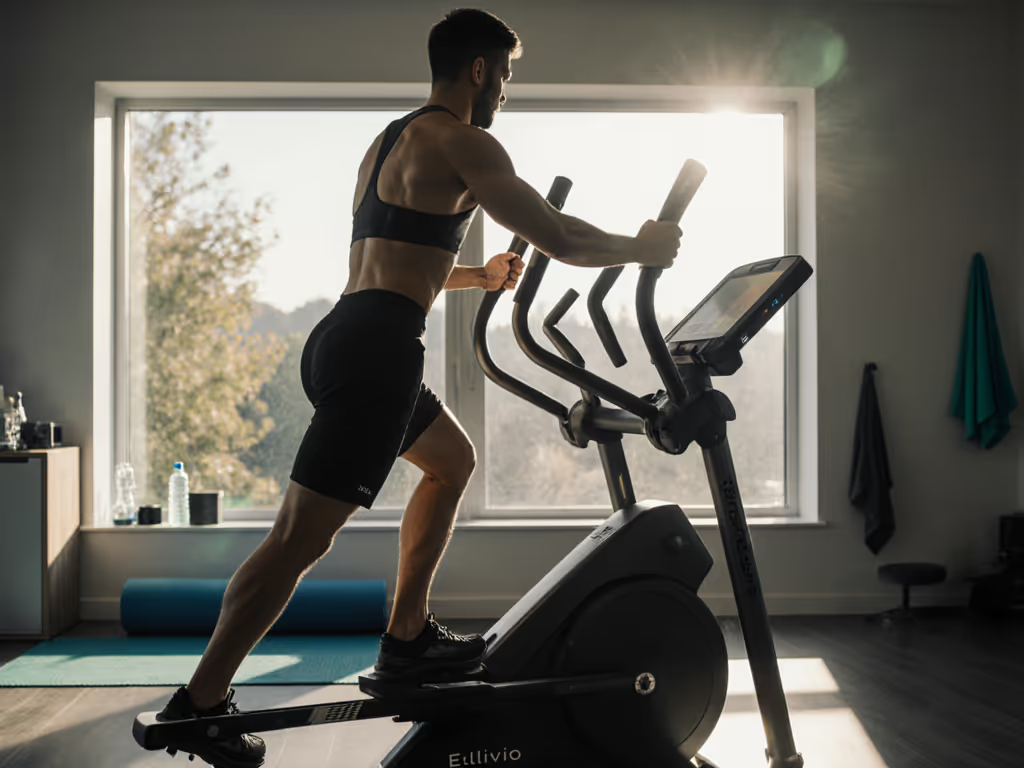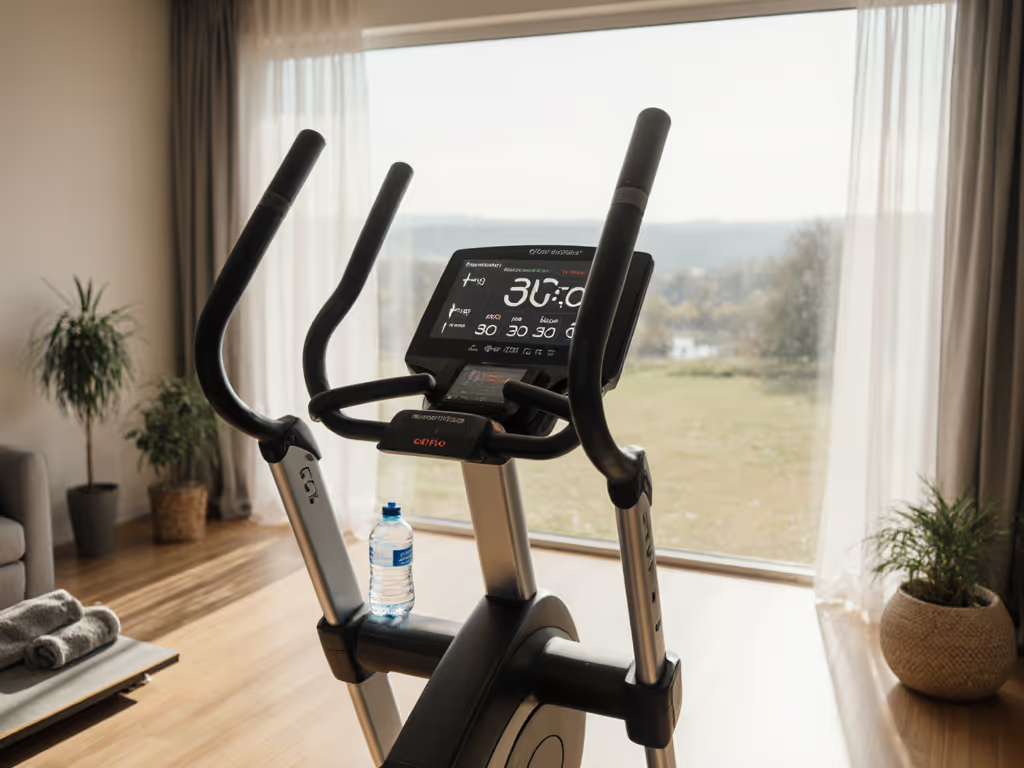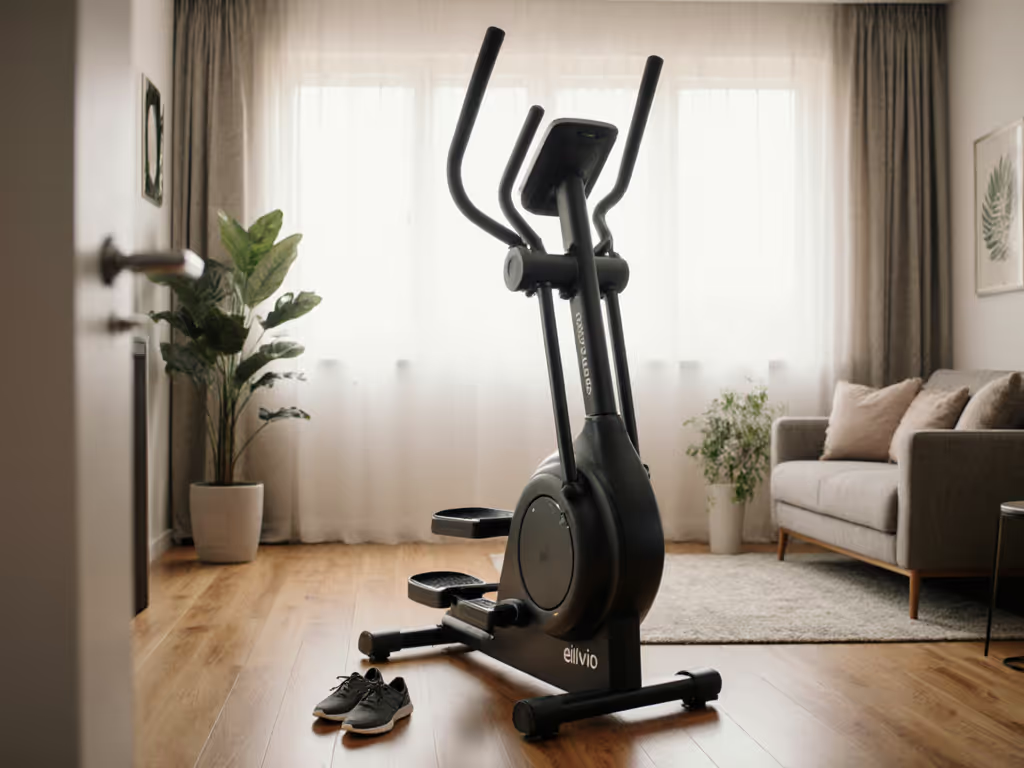When elite runners and basketball players tuck compact elliptical trainers for home into corner spaces, they're not chasing marathon times. They're safeguarding their most valuable asset: consistency. As someone who rebuilt fitness after a wrist injury using just elliptical trainer sessions short enough to finish before coffee, I've watched pros master the art of volume-limited training, and it's the secret sauce for time-crunched adults. Forget punishing intervals; their real play? Turning frictionless movement into non-negotiable daily wins.
Professional athlete elliptical use isn't about intensity, it's about intelligent recovery. A recent runner study (published in the Journal of Sports Science) confirmed what physiologists observe: ellipticals deliver similar cardiovascular benefits to treadmills with 30% less joint stress. Yet home users drown in specs, fearing poor fit or wasted space. Let's reframe this. Your goal isn't to train like an Olympian, it's to adopt their habit sustainability tactics within your apartment, townhome, or basement. Here's how.
Why Pros Prioritize Low-Friction Movement (And You Should Too)
Pros treat ellipticals as daily movement insurance. Post-knee surgery, a Boston Marathon qualifier I coached used a home unit for 12-minute sessions (only on recovery days). Why? Because consistency trumps duration. His logic mirrors sustainable habit design: If setup feels hard, you won't do it. For apartment dwellers with shared walls or 8-foot ceilings, this translates to three non-negotiables:
- Step-up height under 10 inches (to avoid head clearance anxiety)
- Noise under 65 dB (quieter than a normal conversation)
- Footprint smaller than a yoga mat (3' x 6')
I've seen too many buyers skip these checks, then abandon machines due to wobble or ceiling bumps. Measure your space before browsing, then tape the outline on your floor. If your partner's 6'2" and you're 5'4", prioritize models with independent stride adjustments. Your future self will thank you when both of you glide comfortably.
Step 1: Design Your Micro-Session Ritual
Pros don't wing it. They use preset protocols for zero-decision workouts. Copy this:
- The 5-Minute Non-Negotiable: Set resistance to Level 3 (soft-start feel). No music, no apps, just you and the rhythm. This builds the neural pathway for showing up.
- The Coffee Sync: Start sessions while your brew drips. End when it finishes. (My go-to after my wrist tweak!)
- The Arm-Leg Isolation Drill: First 2 minutes: Only push handles. Next 2: Only pedal. Final minute: Full motion. Activates awareness without fatigue.
Small, repeatable wins turn cardio into a lifelong habit.
Skip calorie tracking. Instead, mark a calendar after each session. Three consecutive checks? Reward yourself with a new podcast episode, not guilt-free ice cream. Pros know: celebrating attendance beats punishing output.
Step 2: Optimize Your Physical Setup for Invisibility
Ellipticals fail when they fight your space. Pros treat them like furniture, invisible until needed. Apply these tweaks:
- Silence the vibration: Place a 1/2" anti-fatigue mat under the machine (not just beneath feet). Reduces noise transfer to downstairs neighbors by 40%.
- Camouflage the footprint: Slide it against an unused wall only if you can still step on/off easily. If your ceiling height is tight, tilt the console fully down, it shaves 8" off clearance needs.
- Pre-set the stride: For multi-user homes, write height-specific settings on masking tape stuck under the console (Priya: 18 in | Mark: 22 in).
A physical therapist colleague confirmed: Stepping onto an elliptical for home use should feel like stepping into a shower, no hesitation. If you're hesitating, adjust step height or relocate. Period.
Step 3: Adopt the Pro's Cross-Training Mindset
Forget "elliptical vs. treadmill" debates. For practical programming and recovery use-cases, see our runners' cross-training guide. Pros use elliptical machine cross trainer sessions to protect their primary training. For home users, this means:
- On high-stress days: 10 minutes at moderate resistance replaces a run. Keeps joints happy while maintaining cardio rhythm.
- When space is tight: Face the machine sideways, it needs 6" less width. Essential for basements with pipes or closets.
- For joint-conscious users: Set backward motion (if available). Shifts load from knees to glutes (confirmed by gait analysis studies) without changing intensity.
One client, a nurse with plantar fasciitis, started with 3 minutes daily. In 6 weeks, she hit 15 minutes, without pain. Her secret? She never increased time; she only decreased perceived effort. Pros call this "negative progression," and it's genius for burnt-out beginners.
Making It Stick: Your Action Plan
Your move isn't about buying gear, it's about designing a ritual so gentle, skipping it feels harder than doing it. Pros succeed because they remove all friction points. You can too.
Your immediate next step: Grab a tape measure right now. Map your intended spot's width, height, and step-up clearance. Text or email these numbers to yourself. (Yes, now, before inspiration fades.) Cross-reference with any machine specs later. This 90-second action eliminates 70% of post-purchase regrets.
Remember my one-bedroom comeback? Two rules kept me moving: zero setup friction and sessions short enough to finish before coffee. I never chased "harder." I chased "simpler." Sustainable comfort isn't lazy, it's strategic. It's how you turn an elliptical trainer from a dust magnet into a daily joy. Because consistency isn't built on grand gestures. It's built on showing up, again and again, in a way that feels good. Your future self will thank you.
